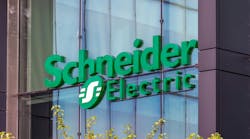LEDs’ Rise to Dominate Roadway and Area Lighting Brings Changes to Sales Process
April 5, 2013
5 min read
The change began a few years ago, when the first blows of economic recession were being felt in city budgets. As mayors, city councils and city managers scrambled to find new ways to deal with unexpected shortfalls in tax revenues, their attention fell on the money they were paying every month to light their roads and outdoor spaces.
It was about this time that salespeople from unfamiliar companies began knocking on their doors, talking about new LED lighting systems for roads and parking lots. The claims that LED lighting could cut power consumption by half and operate for 15 years with no maintenance led the cities to consider whether it might be better to own the fixtures and pay a lower monthly rate just for the power. But the up-front cost of conversion is substantial. Then the federal and state governments began offering grants for infrastructure projects as part of various stimulus packages to boost activity in a lagging economy. Suddenly there was a way for cities to make the change without having to find the up-front money in their own budgets.
The resulting boom in LED lighting sales to municipalities has been dramatic, and the opportunity ahead for this market is tremendous. There are an estimated 26.5 million streetlights in the United States, according to the U.S. Department of Energy’s Municipal Solid-State Street Lighting Consortium (MSSLC). Navigant Research in a report last fall estimated that LED roadway lighting will be a $17 million business by 2020.
On the ground, manufacturers are seeing the surge first-hand. “We’re seeing major RFQs and RFPs for projects covering 500 to 50,000 units every week,” says Scott Posey, value stream manager, Infrastructure, for Acuity Brands, Atlanta. “Between the domestic U.S. and Canada, we get five to 10 a week. In the municipal space, LED has reached the tipping point.”
The pace of new product introduction for LEDs is closer to that of mobile phones than the historical, incremental development when roadway lighting was the domain of high-intensity discharge (HID) sources, says Mike Armstrong, product general manager for outdoor lighting at GE Lighting. “We’re already into our third generation of LED roadway products since we first got into this market in January 2010,” he says. “LED technology is advancing so quickly that systems designed now have to be adaptable to use new drivers and new technology as it becomes available. It’s all about modularity.”
The advances in LED technology are producing better street lighting with whiter light that can be controlled in ways high-pressure sodium (HPS) and other HID incumbents never could. LEDs allow system designers to tailor the light for better uniformity and to reduce light trespass into neighborhoods, for example, and it’s hard to overemphasize the importance of controls, which allow both real-time monitoring of system performance and more innovative approaches such as adjusting light levels based on traffic flow.
The shift to municipalities owning their own fixtures has changed the whole process of selling roadway lighting. It used to be a business that a rep could handle with reasonable effort, “off the side of his desk,” but those days are now gone, says Tim Hill, director of marketing and product management for the outdoor market at Eaton’s Cooper Lighting business. To start with, the number of buying influences in a typical sale has increased by orders of magnitude.
Specifications have become a bit of a free-for-all, say the manufacturers working in this market. Where in days past it was often the company’s independent reps who handled the RFPs, Posey of Acuity says his company has brought most of that work in-house because so many ask about things that only the factory knows.
The person making the decisions at the city level may not have a grasp of the technology, and the technology is changing so rapidly anyway that selling in this market has become as much about education as relationships. A number of third-party sources have stepped in to help potential buyers better compare and evaluate the options, most notably the U.S. Department of Energy. The DOE’s Municipal Solid-State Street Lighting Consortium (MSSLC) includes utilities and hundreds of municipalities that share information to help each other learn from new installations. It also publishes model specifications for roadway lighting. DOE’s Lighting Facts and CALiPER programs also help by evaluating, verifying and standardizing manufacturer claims about LED lighting, including roadway luminaires. The DesignLights Consortium maintains a Qualified Products List with over 21,000 luminaires of all types, which has become the standard reference for government and utility energy-efficiency programs.
The shift thus far has come in cities that either have their own electric utilities or work with a small, local, friendly power company that can adapt their rate structure. Large, investor-owned utilities are another matter. Their rate structures, subject to a massive regulatory approval process, usually don’t provide incentives for them to upgrade to LED technology. But it’s just a matter of time before they get on board, and when they do, watch out.
“The linchpin is when utilities ultimately figure out how this is going to play out for them and they develop rate bundles that allow for the new technology,” says Posey of Acuity. “It’s already enormous with regard to the volume. It used to be what you were selling on an annual basis was pretty much replacements, some knockdowns. What we’re seeing now is complete relight of existing space, a complete change-out. That will quadruple when the utilities jump in.”

